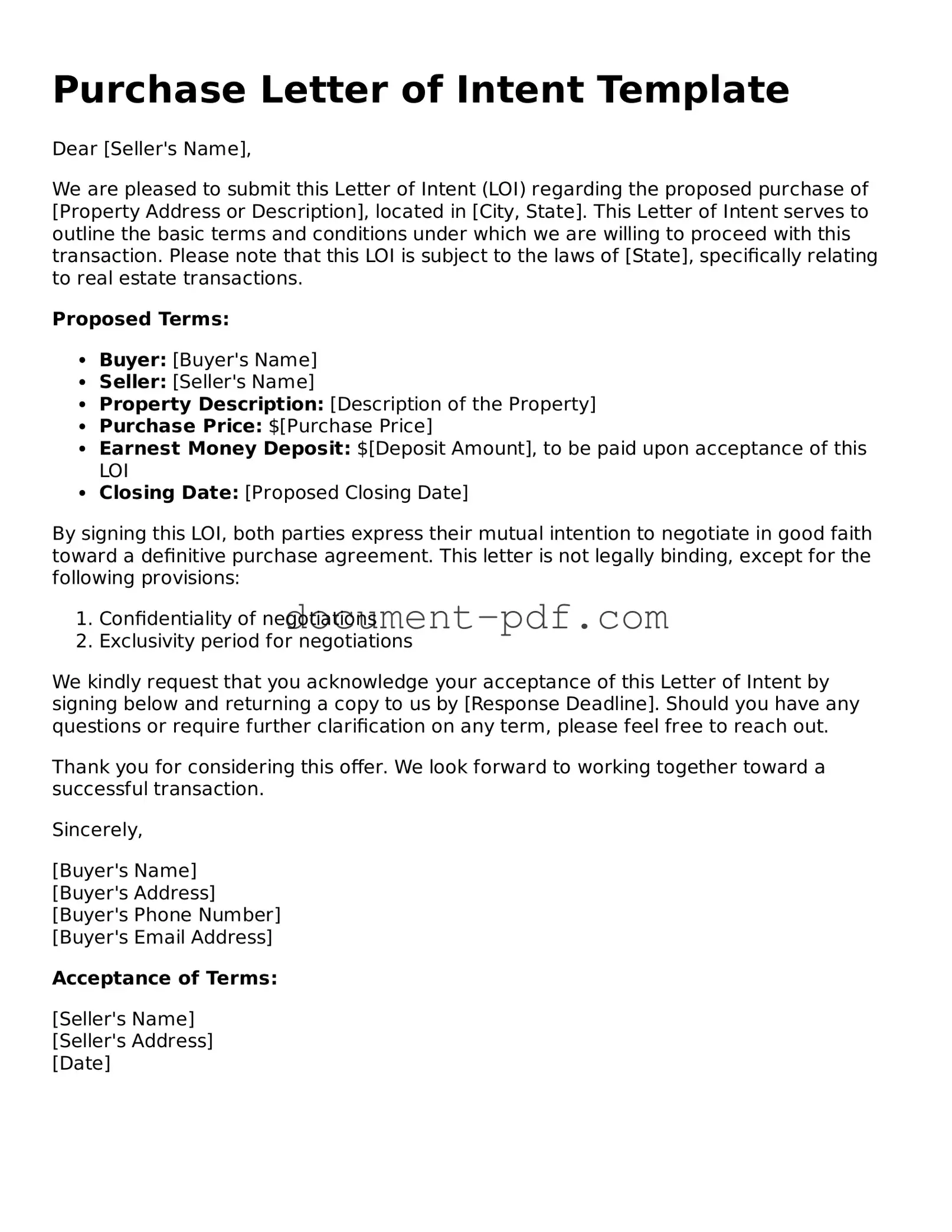A Purchase Letter of Intent (LOI) shares similarities with a Memorandum of Understanding (MOU). Both documents serve as preliminary agreements outlining the intentions of the parties involved. An MOU typically details the understanding between parties before a formal contract is drafted. Like the LOI, it is not legally binding but sets the stage for future negotiations. The language in both documents is often less formal, allowing for flexibility as discussions progress.
Another document akin to the Purchase Letter of Intent is the Term Sheet. A term sheet summarizes the key terms and conditions of a proposed deal. It acts as a blueprint for the final agreement, much like the LOI. Both documents highlight essential elements such as price, timelines, and obligations, providing a clear framework for the parties to follow. While a term sheet may include more specific financial terms, both serve to clarify the intentions of the parties before entering into a formal contract.
The Non-Binding Agreement is also comparable to the Purchase Letter of Intent. This document outlines the intentions of parties without creating any legal obligations. Like the LOI, it allows parties to express their interest in moving forward while maintaining flexibility. This type of agreement can help parties avoid misunderstandings while they negotiate more detailed terms in subsequent documents.
A Confidentiality Agreement, or Non-Disclosure Agreement (NDA), is another document that shares similarities with the Purchase Letter of Intent. While the LOI focuses on the intentions behind a potential purchase, an NDA ensures that sensitive information shared during negotiations remains protected. Both documents are essential in the early stages of a transaction, as they help build trust between parties while they explore their options.
The Offer to Purchase is closely related to the Purchase Letter of Intent. This document represents a formal proposal to buy property or assets, including specific terms such as price and conditions. While an LOI expresses intent and outlines general terms, an Offer to Purchase is more definitive. It signals a stronger commitment to the transaction, moving closer to a legally binding agreement.
The Investment Letter of Intent is a critical document related to the transaction landscape, as it defines a party's preliminary intent to engage in investment dealings. Much like other formal agreements discussed, it sets the stage for more stringent legal frameworks while providing essential groundwork for negotiation processes. For those looking to dive deeper into this subject, resources such as UsaLawDocs.com can offer valuable insights and templates to facilitate the creation of effective investment letters.
A Purchase Agreement is a more formal document that follows the LOI in the negotiation process. It contains detailed terms and conditions for the sale, making it legally binding once signed. While the LOI lays the groundwork for negotiations, the Purchase Agreement finalizes the deal. Both documents are critical in the transaction process, but the Purchase Agreement represents the culmination of negotiations initiated by the LOI.
The Letter of Interest is another document similar to the Purchase Letter of Intent. It expresses a party's interest in a potential transaction but does not commit to any specific terms. Like the LOI, it serves as an initial step in the negotiation process. Both documents aim to open lines of communication and gauge interest, paving the way for more detailed discussions.
Finally, a Bid Proposal is akin to the Purchase Letter of Intent in that it outlines a party's intention to undertake a project or purchase. A bid proposal typically includes specific terms, pricing, and timelines, similar to an LOI. However, bid proposals are often more detailed and formal, especially in competitive situations. Both documents reflect a party's interest and intention to engage in a transaction, serving as important tools in the negotiation process.
